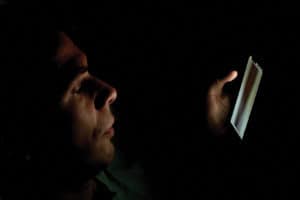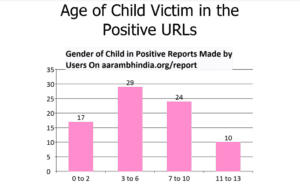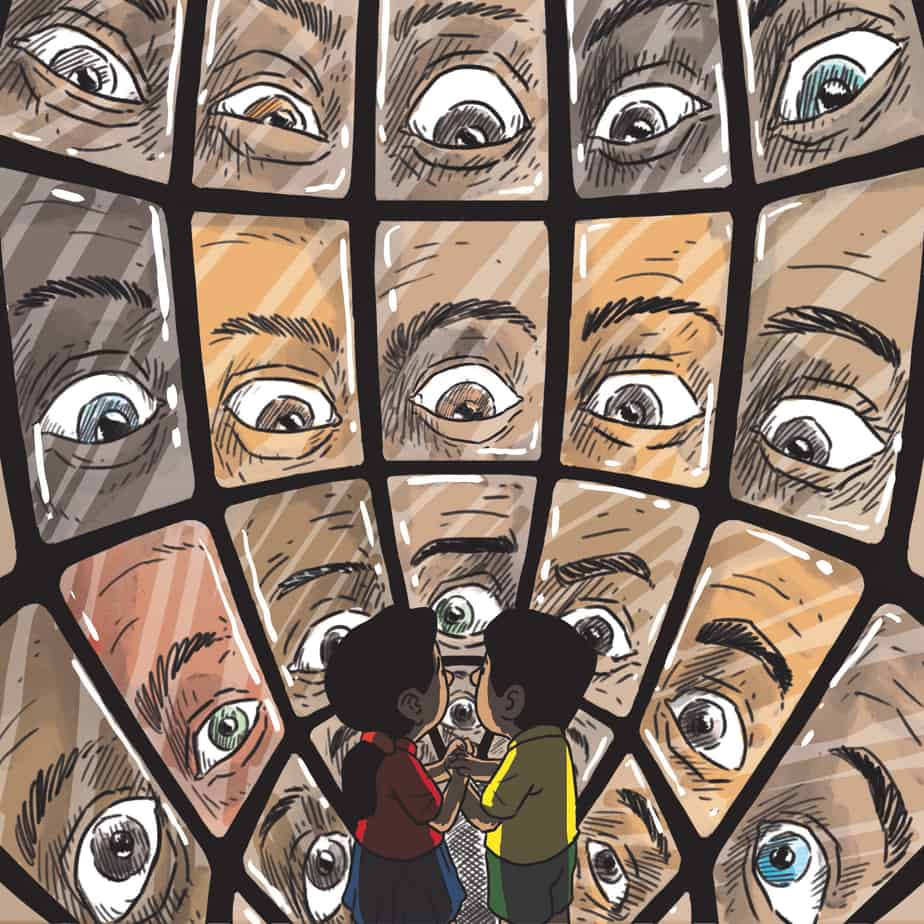Whatsapp and its encryption for our privacy is being abused to distribute child porn. But the long arm of the law is now catching up with the consumers of its illegal content
With mobiles in the palms of our hands, we can all milk the Internet for what it’s worth. Unfortunately, even though the government banned child pornography in 2015, salacious content featuring our most vulnerable citizens is more easily accessible than in the days when youngsters flocked to cyber cafes to watch graphic content.
The market for child porn used to be very secretive and exclusive, until the recent past, i.e, the last decade or so, when social media groups and individuals started producing and/or distributing this content. Though this meant that the material is more widely available, there has been a fallout that its users did not anticipate. The expanded reach of child porn made it easier for cyber cells in different countries as well as global organisations to clamp down on this most repulsive form of porn.
In August this year, Maharashtra police busted a child porn ring which was using WhatsApp to circulate the unlawful material. The messaging app with 217 members in the group called ‘BB Bad Boys’, was busted when Mumbai police was alerted by a former member.
Deputy Superintendent of Police, Thane (Rural), Atul Kulkarni, who is in charge of the case, told Patriot that all members of the group, contrary to reports released by the Indian media, are Indian, and only one member — who had exited the group — lives in the US.

The cracking of the case led to many arrests in Gujarat, and more recently the arrest of the administrator, from the same state. Kulkarni says that 18 persons have already been identified and they are working with the CID teams of Tamil Nadu, Madhya Pradesh, Karnataka, Uttar Pradesh and Delhi to nab them.
“Around 18 people, including the group admins, were sharing child pornography. Although other people were only part of the group, it becomes an offence against the IT act — viewing, downloading, asking or uploading such clips,” IPS officer Kulkarni said.
However, only those individuals who uploaded the content will be charged with various sections under the Indian Penal Code, he added.
Police believe the admins would either access the darknet for the videos or had sources that would send them the videos. Some videos were from India, but the majority were from other countries.

The use of WhatsApp for the viewing, circulation and distribution of child pornography shows a disturbing twist.It should be noted, however, that use of WhatsApp to distribute videos of sexual violence or voyeuristic sexual content is not something new to India. While websites are constantly monitored, WhatsApp is encrypted, catering to the need for privacy — but this privilege is being abused.
According to a report by UNICEF, however, social networking and messaging platforms and search engines such as WhatsApp, Facebook, Twitter, Instagram, Flickr, MySpace and Google, do block and report offensive and abusive material via filters, privacy settings and complaint mechanisms. Since 2011, social media platforms have been using the Photo DNA technology developed by Microsoft to scan every uploaded photo to control the distribution of CSAM.
A survey they undertook shows a significant threat. Undertaken in 35 Indian cities, the survey indicated that about 28 million out of a total of 400 million Internet users were school-going children.
What this data implies is that this high usage by children means they are vulnerable to persons who they may meet online, which could lead to the children being groomed: establishing a connection with a child, lowering their inhibitions towards sexual abuse.

The report of the Parliamentary Committee on Information Technology in 2014 also recognised “the threat posed to children by predatory paedophiles, which conceal their true identity whilst using the Internet to ‘groom’ potential victims.”
UNICEF in the same regard, points to the demand of self-generated content, such as sexting and live-streaming child sexual abuse. They even found cases where parents themselves were part of the abuse, being paid a minimal fee (Rs 500) to allow their child to be photographed or filmed with no clothes on or while performing sexual acts.
To put things into perspective, the latest data provided by the NCRB on this issue was in 2015, which showed 96 cases of child porn being reported. This was a whopping 135% increase from the previous year. How things panout now in 2018 will have to be seen.
Interpol’s data on crimes against children specifically using the Internet says that till July 1, 2018, more than 14,200 identified victims from around the world, were found, including data related to numerous unidentified victims, whose cases are yet to be investigated.

Internet Watch Foundation’s (IWF) Indian Reporting Portal, the Aarambh Foundation, has received around 1,000 reports related to online child pornography, since being launched in 2016.
Here one can report anonymously to objectionable content, which will then be analysed by IWF and then removed from the internet. In 2017, an anonymous report was sent through the Indian portal to IWF, showing child pornography hosted in a cyberlocker. According to the IWF, the material was extremely disturbing, portraying baby girls and boys from a range of ethnicities (speaking of ethnicity, most of the cases of child porn viewed in India portray white children). Although an internet user in India filed the report, the webpage was hosted in Russia and contained over 200 videos.
GOVERNMENT RESPONSE
Compulsive viewing of porn has been growing in direct proportion to sex addiction. In a paper titled India’s Response to Combating Child Pornography, Barla Mallesh Yadav writes that with the rapid growth of Internet and technology, there has been a rise in the availability of child pornography in India.
The government had blocked around 857 pornographic websites in 2015 because of the concerns about child porn. The decision taken under the Information Technology Act and in consonance with Article 19(2) of the Constitution of India had allowed the government to impose restrictions on grounds of decency and morality.
Many decried this move as being draconian and prudish for banning all porn websites, and eventually the complete ban was lifted and only those sites containing child pornography were blocked out.
A report in July this year revealed that most Internet Service Providers in the country were yet to comply with the Centre’s one-year-old order requiring the blocking of websites with online Child Sexual Abuse Material (CSAM), and adopt the Internet Watch Foundation’s resources to block their users from accessing URLs that host such content.
According to Internet and Mobile Association of India and Kantar IMRB, Indian users of the Internet now number 550 million users (as of June this year), which means the possibility of abuse is massive. Currently, 34 per cent of India’s population is using the Internet, but the cybercrime rate exceeds even that number.
Two other cases from this year show how multimedia creates the best crevices for predators to thrive, even allowing a worldwide connection between paedophiles.
In February, the Central Bureau of Investigation busted an international child porn ring which was again using a WhatsApp group to circulate questionable pictures and videos. The administrator of the group was Nikhil Verma, a youth from Uttar Pradesh, but had members spread globally including in the US, China, New Zealand, Mexico, Afghanistan, Pakistan, Brazil, Kenya, Nigeria and Sri Lanka among others, the officials said. While the WhatsApp group was not directly put under surveillance, the CBI officials located IP addresses of the computers and mobile phones used to upload and circulate child pornography videos, and tracked down the persons involved.
Among the arrested were Satyendra Chauhan, a resident of Mumbai, Nafis Raza and Zahid, residents of Delhi and Adarsh of Noida, identified as other administrators of the WhatsApp group “Kids-XXX”.
In April earlier this year, yet another WhatsApp group was busted by the Madhya Pradesh police cyber cell. The group, named ‘Kids Only Sex’, constituted of members from 28 countries all over the world, with the admin being a resident of Gujarat. Among those arrested was also a student of class 12 from Khandwa district. The perpetrators were booked under Section 67-B of the IT Act.
The WhatsApp group was reportedly being run from a Kuwaiti mobile number, the admins of which were constantly changing, according to the Superintendent of Police Jitendra Singh. Members of the group were invited through links sent to their mobile devices or computer systems, that can be accessed from that particular IP address alone, thereby ensuring secrecy of the group. There was no proof to suggest that money was exchanging hands in the distribution and viewing of this content. The police are presently continuing their search for similar social media groups that circulate content of this nature.
Researcher Barla Mallesh Yadav points out in a 2017 report that implementation of the laws for the protection of children “is to be looked by suspicious eyes”.
He backs this with the example that not a single case has been registered in High Courts or the Supreme Court under Section 15 of the POCSO Act, 2012 which deals with storage of pornographic material involving a child for commercial purposes.
Some of the recent data (2016-2018) provided by Aarambh Foundation indicates that the largest number of children falling prey to child porn belong to the age group 3-6 years — 87% of the victims are under the age of 10. Majority of the cases of child porn reported from India are actually cases of rape, while the others are cases of molestation or sexually abusive imagery. In the past two years, 55 of the cases reported were cases of penetrative sexual assault, 10 were non-penetrative, while 15 were cases of deliberate sexual posing and imagery. Moreover, for every 50 girls that are victims of child porn, eight boys suffer the same fate — and the figure for videos and images featuring boys and girls together is 22, for every 50 girls and eight boys. In fact, majority of child pornography content features girls.
In India, the limitations to catching those who produce, distribute and use child abuse material are still significant. The inadequate knowledge of cyber laws and limited enforcement capacities undermine reporting and investigation of cases.
While reports by international outfits show a trend of increasing incidents of child abuse and its material being distributed and viewed in the country, a lack of information by government bodies themselves speak of how authorities have not taken this cybercrime seriously enough.
Abuse is rampant
Childline India’s report on child abuse in India had submitted that of the total child respondents, 4.46% had reported being photographed nude. This, it said, was an unusually high percentage. This data from 2007 was the first of its kind for such a collection. Among the children, 52.01% were boys and 47.99% were girls.
In different age groups, the majority of cases (48.17%) where children were photographed in the nude were among younger children in the age group 5-12 years. This was followed by 28.02% among adolescents in the age group 15-18 years and remaining 23.81% in the age group 13-14 years. When percentages of children photographed in the nude were seen across the states, the highest percentages were reported from the states of Andhra Pradesh, Assam, Bihar and Delhi. The fact that these four states seem to repeatedly emerge as having the highest incidence of sexual abuse is disturbing. But it is difficult to attribute reasons for this.
The Childline report found that Andhra Pradesh was the state with highest number of incidents of trafficking for commercial sexual exploitation of women and children. There is a correlation between urbanisation and crime but then this argument would hold only for Delhi and partially for Andhra Pradesh.
Here, it also pointed out, that the friend or class fellow and the uncle or neighbour emerged as the main abuser. The fact that brothers and cousins together amount to 21% is also noteworthy. Among the evidence groups, though, the children in school reported a low percentage of 2.8%. A large number of the perpetrators of these crimes constitute individuals who are close to or related to the victims.
With a few arrests and a couple of ongoing investigations under their belt, law enforcement agencies are certainly not looking the other way. Internet Watch Foundation (IWF) membership manager Will Few says that India has some of the worst statistics anywhere in the world for child sexual abuse. And while he contended that the problem was huge for the country to tackle, the government was taking positive steps, one of which was to work with the IWF to launch a Reporting Portal, that would be a safe space to report abuse.
International Child Sexual Exploitation image and video database managed by Interpol, is a tool which allows specialised investigators to use sophisticated image and video comparison software to make connections between victims, abusers and places.
Police forces in 54 countries plus Europol are connected to the ICSE database and cooperate in the identification of child sexual exploitation victims and their abusers.





